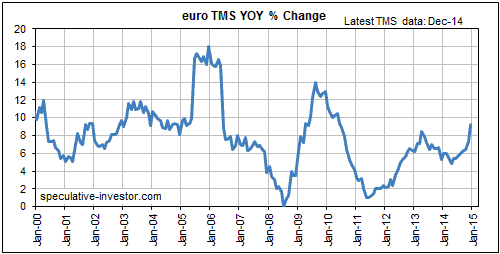A few days ago the web site energyandgold.com published an interesting interview with Bob Moriarty. The interview is titled “Gold Bottom in, New Bull Market Will Make 2008-2011 Look Tame“, because that’s Bob’s outlook. Bob says a few nice words about me in the interview, but you shouldn’t hold that against him. He’s an astute observer of the markets.
I think Bob’s outlook is plausible, but I’m not expecting anywhere near as much upside in gold-related investments this year as he is. The rebounds from the 2008 bottoms in gold and gold-mining stocks were very quick, but that’s primarily because 2008 was a crash within a continuing cyclical bull market. It wasn’t a cyclical bear market.
The speed with which gold and the mining stocks recover from their 2011-2014 drubbings will be determined by both fundamentals and psychology. Even if the fundamentals become unequivocally gold-bullish in the near future (they are currently either mixed or slightly bullish), history tells me that it could still be at least 12 months before a strong upward trend gets underway. For example, gold’s fundamentals were as bullish as they ever get in early-2001, but the bull market didn’t really get going until 2002.
However, it’s certainly possible that the sentiment shift will happen faster this time around, because the current situation is so far into unprecedented territory that the historical precedents can’t even be seen from here. The mal-investment fostered by central banks over the past several years is simply mindboggling.
For example, the fact that trillions of dollars of government bonds now trade at negative yields reflects mal-investment on a gigantic scale. It means that a huge quantity of wealth has been diverted towards bond speculation and government.
For another example, US corporations have spent hundreds of billions of dollars buying back their own shares instead of investing in business growth. This is a consequence of the perverted incentives created by the Fed.
So, I’m not betting on a rapid change of fortune for gold-related investments, but I can’t rule it out.
 Print This Post
Print This Post



